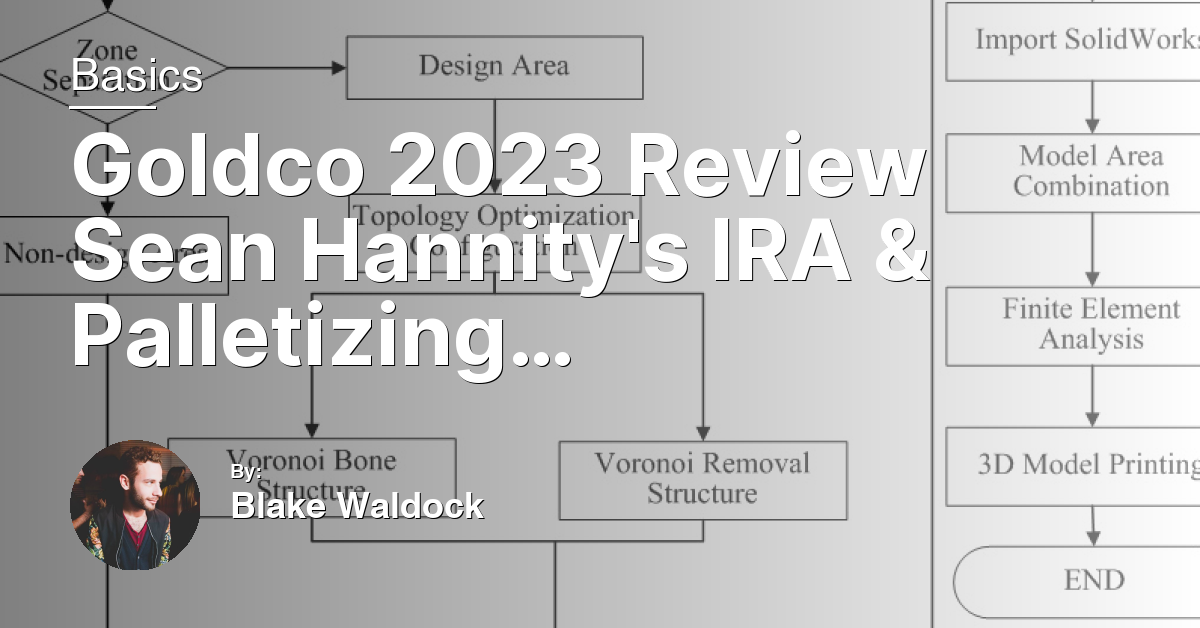In an age where financial security is more elusive than ever, safeguarding one’s retirement savings becomes paramount. Enter the realm of Gold IRAs—a timeless strategy marrying the solidity of precious metals with the foresight of retirement planning. This guide embarks on a journey through the intricacies of investing in physical gold and other precious metals within an IRA framework, offering a beacon of stability in the tumultuous sea of modern finance. Welcome to the Gold IRA Guide, your compass to navigating the golden path to a secure retirement.
The Mechanics of a Gold IRA
To begin investing in a Gold IRA, one must first establish a self-directed IRA through a custodian bank authorized to hold physical precious metals. This setup allows for diversification of retirement assets beyond traditional stocks and bonds, including gold, silver, platinum, and palladium. This variety supports a hedge against inflation and the potential devaluation of the United States dollar, crucial for preserving purchasing power in retirement.
The investor then selects the precious metals, whether in bullion or coin form, to include in their IRA. These purchases must meet the Internal Revenue Service’s purity and fineness standards. The custodian bank facilitates these transactions, ensuring that the metals are securely stored in a trust or bank approved by the IRS.
Fees for a Gold IRA include setup charges, annual storage fees, and possibly seller premiums over the metal’s spot price. It’s vital to research and compare custodian banks, considering their fee structures, customer satisfaction ratings, and Better Business Bureau scores.
Finally, investors should consult with a financial adviser to ensure that the inclusion of precious metals in their retirement portfolio aligns with their overall financial plan, goals, and risk tolerance. This step is crucial for making informed decisions in the complex landscape of personal finance and retirement planning.
The Rules of Holding Physical Gold in an IRA
Investing in physical gold through a Self-Directed IRA offers a unique way to diversify your retirement portfolio. It’s critical to follow the IRS rules to avoid taxes and penalties. Firstly, the IRS mandates that the gold must be held by a trustee or custodian. Direct possession by the investor is not allowed.
Gold must meet IRS fineness standards, typically .995 purity for gold. Approved forms include bullion bars and certain coins issued by the U.S. Treasury or other recognized government mints.
Investments aren’t limited to gold; silver, platinum, and palladium are also viable options offering further portfolio diversification. Remember, all transactions and storage fees can impact the overall cost of holding these precious metals in your IRA.
Consulting with a financial adviser experienced in precious metals can aid in navigating these regulations, ensuring compliance, and aligning this investment with your broader financial plan and retirement goals.
The Pros and Cons of Gold IRAs: A Balanced View
Pros of Gold IRAs include diversification of retirement portfolios, potentially reducing risk by not being tied solely to stocks or bonds. Gold and other precious metals like silver or platinum can serve as a hedge against inflation, preserving purchasing power as the dollar’s value fluctuates. During financial crises, such as the 2007–2008 downturn, gold historically increases in value, providing a safety net for investors.
However, there are cons to consider. Gold IRAs require storage and insurance fees, adding to the cost of the investment. Unlike stocks or real estate, gold does not generate income through dividends or rent, which might make it less appealing for those seeking regular returns. The price of gold can be volatile in the short term, influenced by factors such as currency values and interest rates.
Investors must weigh these factors carefully, aligning them with their personal finance goals, risk tolerance, and overall investment strategy.
Converting Existing IRAs to Gold: How It Works
To convert an existing IRA to a Gold IRA, first, choose a trusted custodian experienced in precious metals. This financial institution will facilitate the transfer of assets from your current IRA to a new Gold IRA without incurring taxes or penalties.
Next, select the precious metals you wish to include in your IRA. While gold is a popular choice for its role as a hedge against inflation and currency devaluation, silver, platinum, and palladium are also IRS-approved metals that can diversify your retirement portfolio.
The custodian will then purchase the metals on your behalf, often through a dealer with whom they have an established relationship. These metals, whether in the form of coins or bullion, will be stored in a secure, IRS-approved depository.
Custodianship and Physical Possession of Gold in an IRA
When investing in a Gold IRA, choosing a trustworthy custodian is paramount. Custodians are financial institutions approved by the IRS, such as banks, credit unions, or trust companies, responsible for holding and safeguarding the physical gold or other precious metals on behalf of the IRA owner. This arrangement ensures compliance with IRS regulations, which prohibit investors from taking personal possession of the metals while they are part of the IRA.
The custodian also handles the purchase of IRS-approved coins or bullion and oversees their storage in a secure facility. Storage fees, typically an annual charge, are a key consideration for investors. These fees can vary significantly depending on the custodian and the value of the metals stored, impacting the overall cost of the investment.
Diversification with physical gold or silver can serve as a hedge against inflation and financial crises, offering stability in times of economic uncertainty.
The Financial Implications: Costs and Fees of Gold IRAs
| Costs/Fees | Description |
|---|---|
| Initial Setup Fee | Some Gold IRA custodians charge a one-time fee to set up your account. |
| Annual Maintenance Fee | Most Gold IRA custodians charge an annual fee to maintain your account. |
| Storage Fee | If you choose to store your physical precious metals with the custodian, there may be a storage fee. |
| Transaction Fees | Some custodians charge a fee for each transaction made within your Gold IRA. |
| Commissions | When buying or selling physical precious metals, there may be commission fees involved. |
Alternatives for Investing in Gold Beyond IRAs
For investors looking to diversify beyond gold IRAs, there are several compelling options to consider. Directly purchasing physical gold, such as coins or bullion, offers tangible ownership. This method provides a hedge against inflation and financial crises, much like gold IRAs, but with direct control over the asset.
Investing in silver or platinum is another pathway. These metals, while more volatile, can offer substantial returns and further diversify a portfolio. Retail investors can easily access these metals through online shopping platforms or dealers, adding convenience to the investment process.
For those inclined towards modern investment avenues, gold ETFs (Exchange Traded Funds) and mining stocks present an alternative. These options allow for exposure to gold’s value without the need for physical storage. Additionally, certain ETFs and stocks offer dividends, providing an income stream alongside potential capital gains.
Lastly, digital assets, such as cryptocurrency, have emerged as a novel form of diversification. While not directly related to gold, they represent a new frontier in hedging against traditional financial market risks and the devaluation of the United States dollar.
The Debate: Gold IRA vs. Physical Ownership
Choosing between a Gold IRA and physical ownership of precious metals like gold and silver involves weighing convenience against control. A Gold IRA, managed through a trust company, offers a hands-off investment approach, allowing diversification of your retirement portfolio with assets historically resilient against inflation and financial crises. This option brings tax advantages similar to traditional IRAs and simplifies buying, storing, and insuring your investment.
On the other hand, physical ownership grants you direct control and access to your metals, be it gold coins or silver ounces. This method satisfies those who prefer tangible assets over digital or paper claims. While offering immediate liquidity and no custodian fees, it demands personal responsibility for secure storage and insurance, potentially complicating matters.
Both options serve as a hedge against economic uncertainty and can be integrated into a broader strategy for wealth preservation and growth. Your choice should align with your comfort level in managing these assets and your long-term financial goals. Consulting with financial advisors who understand the nuances of precious metals investing can provide tailored advice, ensuring your decision supports your retirement vision.
Understanding Gold IRA Eligibility and Tax Regulations
Eligibility for a Gold IRA is determined by existing IRA regulations, allowing individuals to diversify their retirement portfolio with precious metals like gold, silver, and platinum coins, as well as certain bullion. Gold, often considered a hedge against economic uncertainty and inflation, provides a valuable option for those looking to safeguard their retirement savings. Diversification of assets, including precious metals, can mitigate risks associated with stock market volatility and financial crises, similar to the uncertainty experienced during the 2007–2008 financial crisis.
The Internal Revenue Service (IRS) sets forth specific guidelines for precious metals to be eligible for a Gold IRA, including purity requirements – for example, gold must be 99.5% pure. Investments must be stored in an IRS-approved depository; direct possession by the IRA owner is not allowed.
Tax implications for a Gold IRA follow the same regulations as traditional IRAs. Contributions are tax-deductible, and taxes are deferred until withdrawal, typically at retirement age. It’s crucial to consult with a financial advisor or tax professional to understand the full scope of potential tax benefits and liabilities, ensuring compliance with IRS rules and maximizing the potential of your retirement savings.
FAQs
Can you have physical gold in IRA?
Yes, it is possible to have physical gold in a specially designed precious metal IRA.
How do I convert my IRA to physical gold?
To convert your IRA to physical gold, you will need to open a self-directed IRA that permits investments in precious metals. Once the account is set up, you can transfer funds from your existing IRA to purchase physical gold.
What is the downside of a gold IRA?
The downside of a gold IRA is that it involves more complex logistics and expenses compared to conventional IRAs, including purchase commissions, storage fees, and insurance costs, which can impact returns. Additionally, investments in a gold IRA are limited to IRS-approved precious metals.
Should I move my IRA to gold?
Moving your IRA to gold can provide protection against inflation and market volatility, but it may also entail additional costs and limited growth potential. Consider carefully before making a decision.

